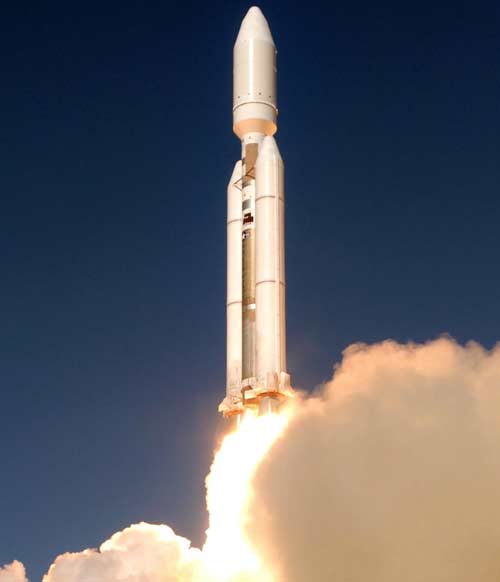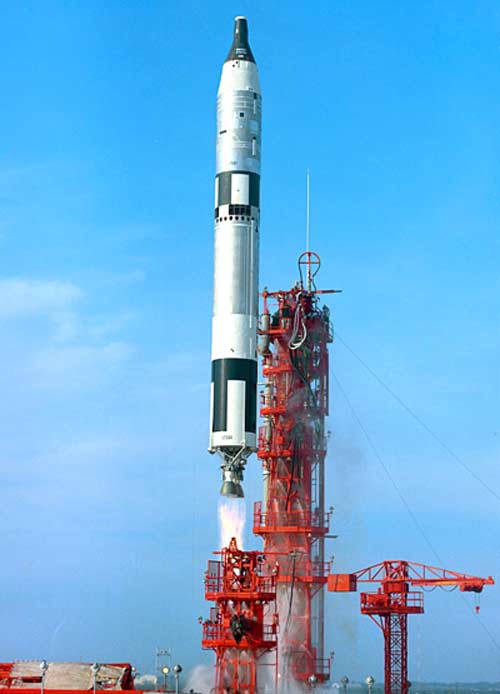Key Takeaways:
October 31, 2005
On October 19, the United States launched a Titan rocket into space for the 368th —and final — time. The Titan IV launch ends a family of rockets that began with the Titan I intercontinental ballistic missile developed in 1959.
On October 19, the United States launched a Titan rocket into space for the 368th —and final — time. The Titan IV launch ends a family of rockets that began with the Titan I intercontinental ballistic missile developed in 1959.
The last Titan rocket launched, a Titan IV-B, left the ground carrying a secret payload.
Pat Corkery, Lockheed Martin
The heavy-lift workhorse has been an important part of space exploration. The Titan II lofted 10 Gemini manned spacecraft into orbit in the mid-1960s as preparation for the Apollo Moon landings. The rocket boosted the Viking 1 and 2 landers to Mars (Titan IIIE), shot the twin Voyager spacecraft on their successful cruise through the outer solar system (Titan IIIE), and sent Cassini-Huygens to Saturn (Titan IV-B).
The last Titan IV-B thundered off the pad at Vandenberg Air Force Base, north of Los Angeles, carrying a secret payload for the National Reconnaissance Office, which oversees U.S. spy satellites. The rocket, manufactured by Denver-based Lockheed Martin Corp., was the largest used by the Air Force and was capable of boosting payloads similar in size and weight to those launched by NASA’s space shuttle.
Nevertheless, the Titans always have been finicky boosters, requiring large and expensive support crews and lengthy launch preparation. Lockheed Martin’s new Atlas V and the Boeing Company’s Delta IV, both of which are cheaper to operate and more reliable, will take the Titan’s place.











